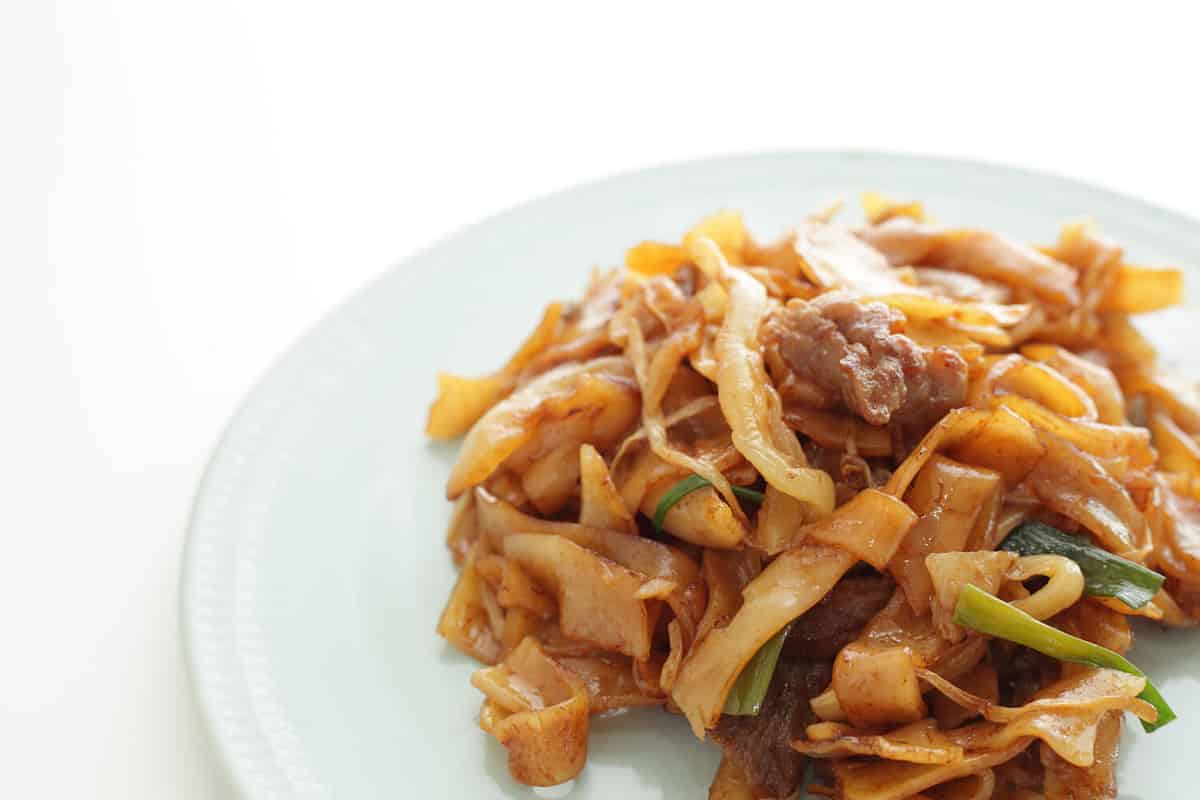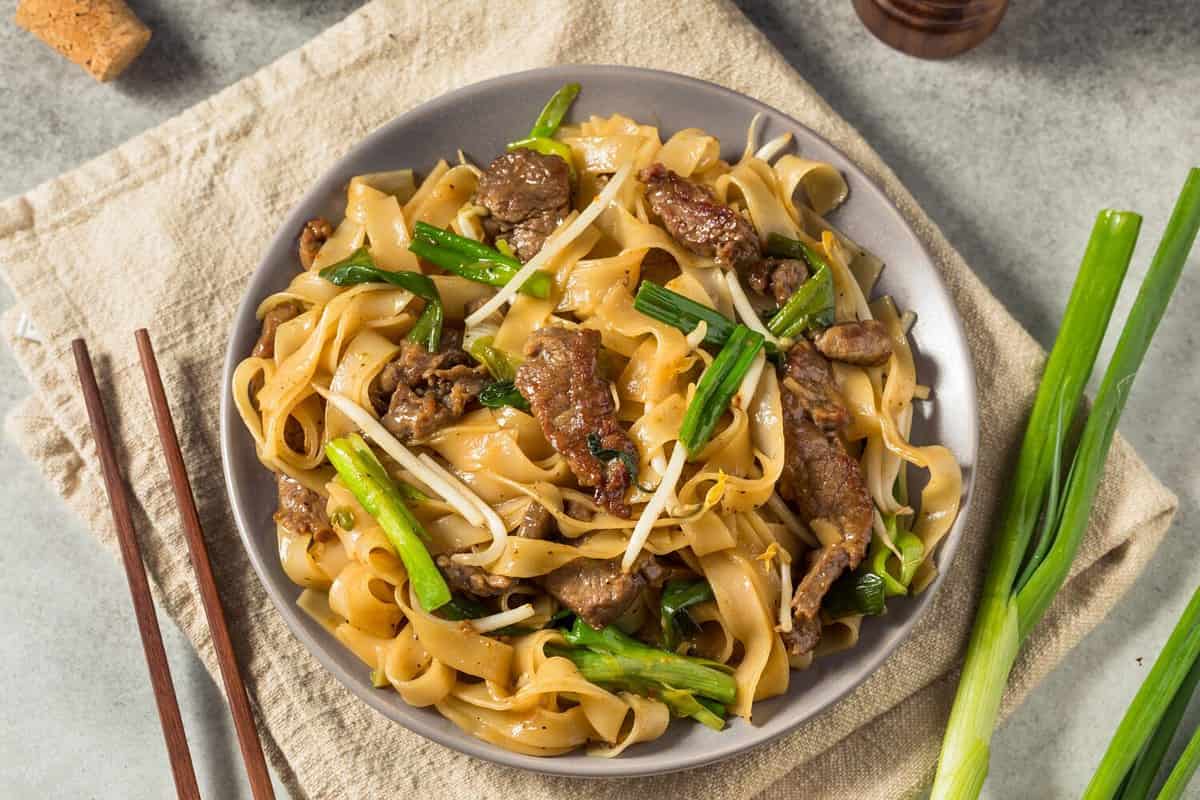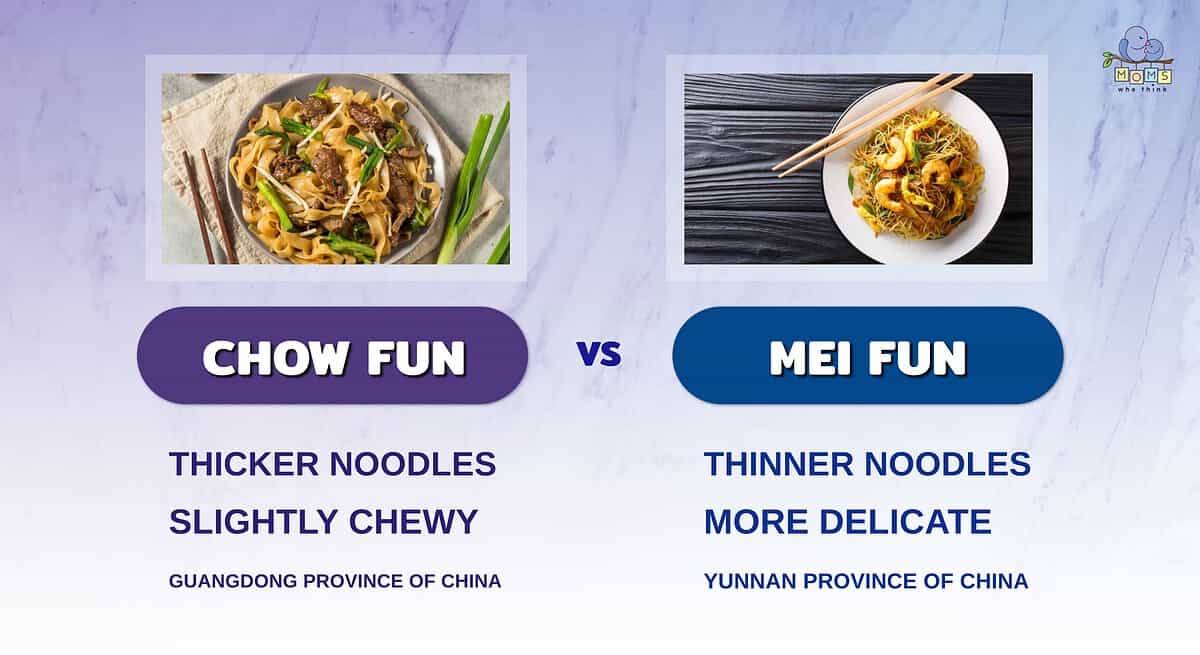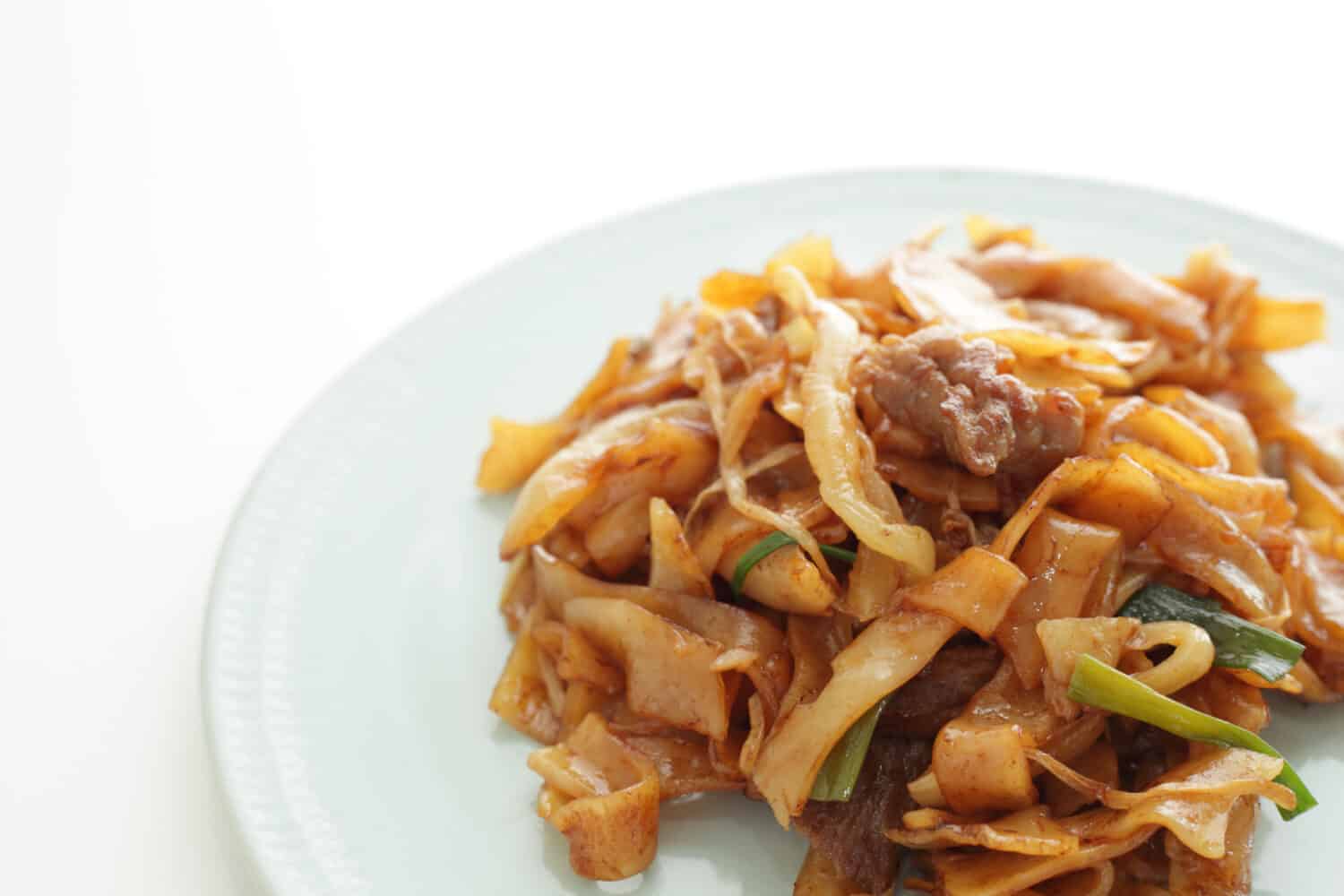Chinese food is one of the healthiest meals in the world. However, it also depends on how you cook it, particularly the type of sauces and noodles you use.
Chow fun vs. mei fun are different kinds of noodles that can affect how you make your food. These noodles not only have different nutritional values, but they also have a much different texture and taste. For instance, many Chinese restaurants use chow fun in dim sum. The appearance of chow-fun noodles is usually flat, thick, and white. Mei fun is also a Chinese noodle that is in a lot of popular Chinese food dishes. The critical difference is that mei fun is more delicious and often used in soups.
This guide will explore the key differences between chow fun and mei fun. You'll discover the unique differences and which one is relatively healthier.
Chow Fun vs. Mei Fun: The Key Differences In Taste and Style

©jreika/Shutterstock.com
Chow fun noodles originate from the Guangdong Providence of China, while mei fun noodles originate from the Yunnan Province of China. In addition to these geological differences, these noodles are often in many of the most popular Chinese food dishes.
Chow fun is typically thick, wide rice noodles. They are used in a lot of stir-fried meals. Some of the more popular meals you can make with chow fun are:
- Beef chow fun
- Vegetable chow fun
- Chicken chow fun
These meals typically include soy sauce, sesame oil, salt and pepper, and sometimes oil spices to give it some extra kick. You can also add green beans, scallions, and ginger. Chow fun is often recognized as a staple of Cantonese food. And it's a popular dish to make at home.
While mei fun and chow fun are both noodles, they are very different noodles that complement other meals. For example, mei fun has skinny noodles. Compared to chow fun noodles, mei fun noodles have a firmer bite and a different taste. Mei fun noodles are also used diversely. They are often in stir fry, soups, and spring rolls.
- Mei fun shrimp soup
- Mei fun beef stir fry
- Mei fun vegetable spring rolls
A traditional way of making mei fun is with oil, vegetables, chicken, and eggs. Restaurants often use these ingredients to make a stir fry, including bean sprouts, scallions, and bell pepper. You can also make different meals at home and add vegetables and oils to create different kinds of mei fun or chow fun noodles.
Chow Fun and mei fun offer a variety of ways to make meals. While they may not seem so different, they have a variety of differences between them. They appear and taste different and are also designed to complement different meals. They also have unique health differences that we will explore further.
The Nutritional Differences

©Brent Hofacker/Shutterstock.com
Chow fun vs. mei fun offers a variety of meal options with different robust flavors. You can use less oil and more vegetables, especially cooking at home, to make the meal healthier.
Typically, chow fun and mei fun are not the healthiest dishes in restaurants. This is because of the immense oil in both dishes, which adds a lot of calories. However, if you want to add more protein to your diet, chow fun and mei fun noodles have plenty of protein. Regarding other nutritional values, both noodles are low in carbohydrates and fats. Sodium intake will depend on how much soy sauce is in the dishes.
Overall, chow fun and mei fun noodles are not the healthiest food options, but they are also not the worst. You have a variety of ways to make each dish, especially if you make them from home. You'll have more control over how much oil to include and if you want to add extra vegetables to the meal.
What's the Better Choice?
Chow fun and mei fun are both delicious choices for a meal. They both offer loads of protein however you make it, especially if you make a meatier meal. You'll discover that chow fun, or mei fun, gives you various Chinse food options, from stir fry to soups. You'll also find that each offers healthier options depending on whether you cook with more vegetables and the different oils you use. Ultimately, both are divine choices for preparing nearly any kind of meal.

While there are many similarities between chow fun and mei fun, there are also a few differences. Here are a few of those differences, some more obvious than others:
- A noticeable difference between these two Asian noodles is chow fun has thicker, wider noodles, whereas mei fun has thinner noodles.
- Both originated in China; however, chow fun noodles are from the Guangdong Province, and mei fun noodles hail from the Yunnan Province.
- Chow fun noodles are considered moderately chewy, while mei fun is slightly more delicate.
The image featured at the top of this post is ©jreika/Shutterstock.com.

